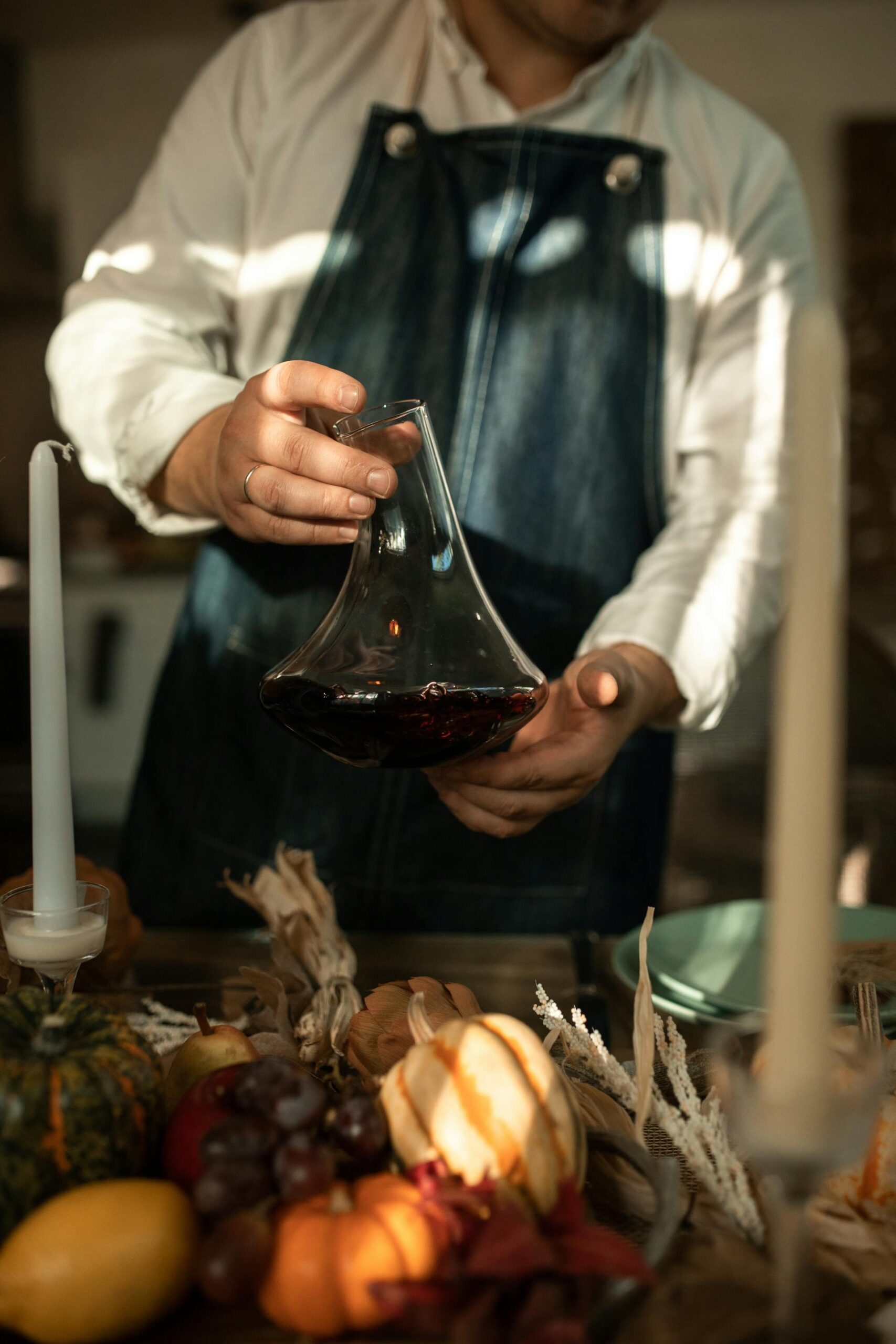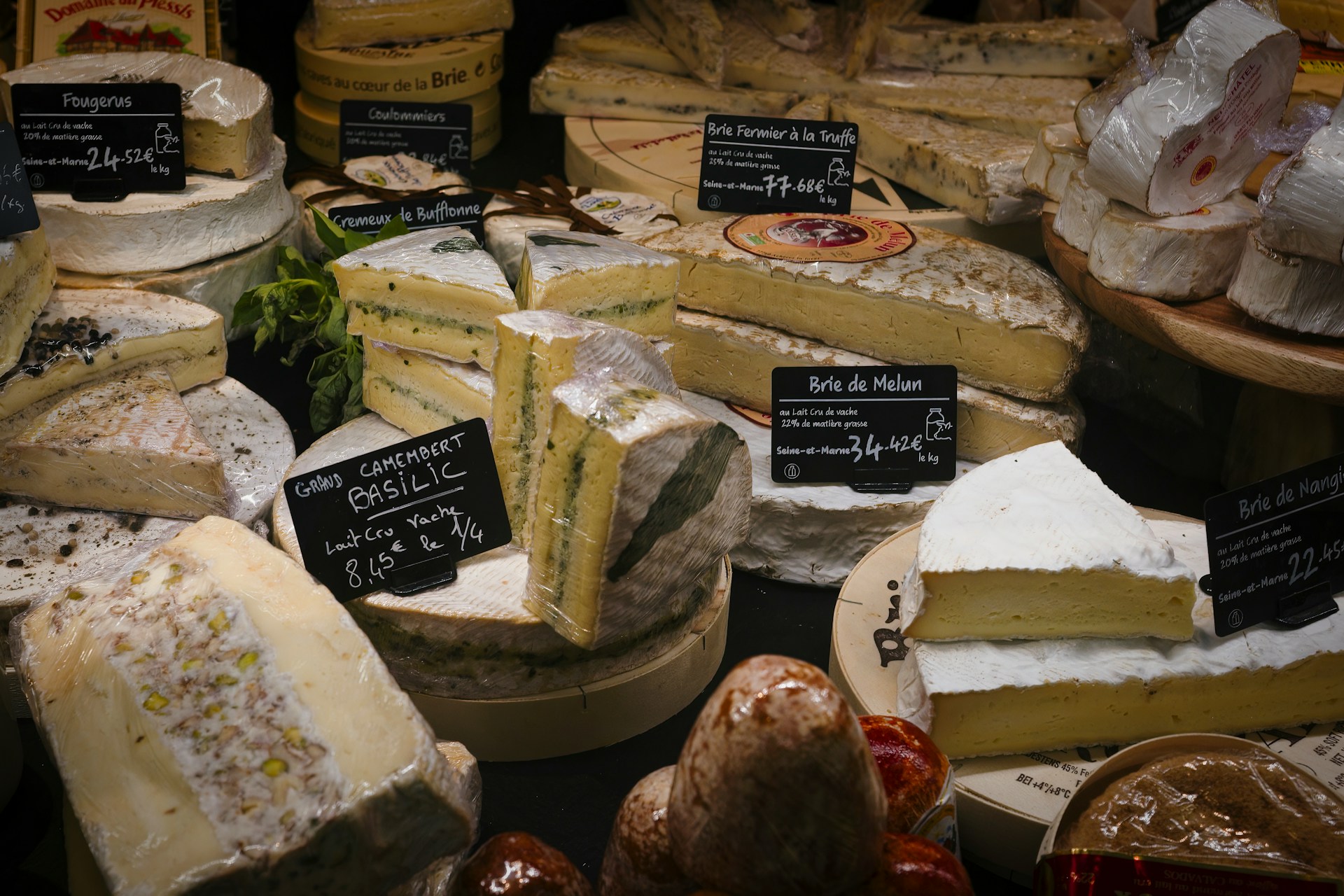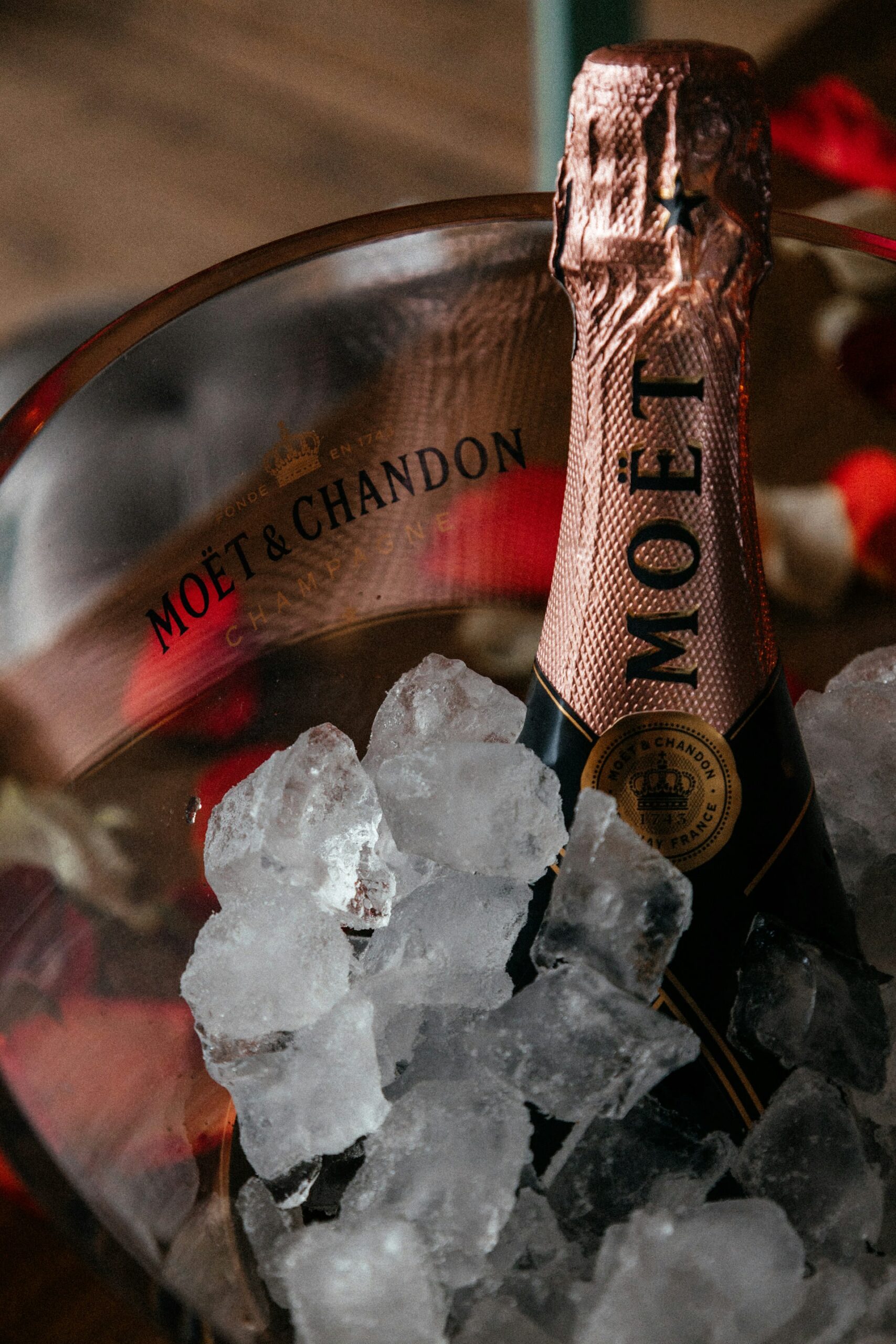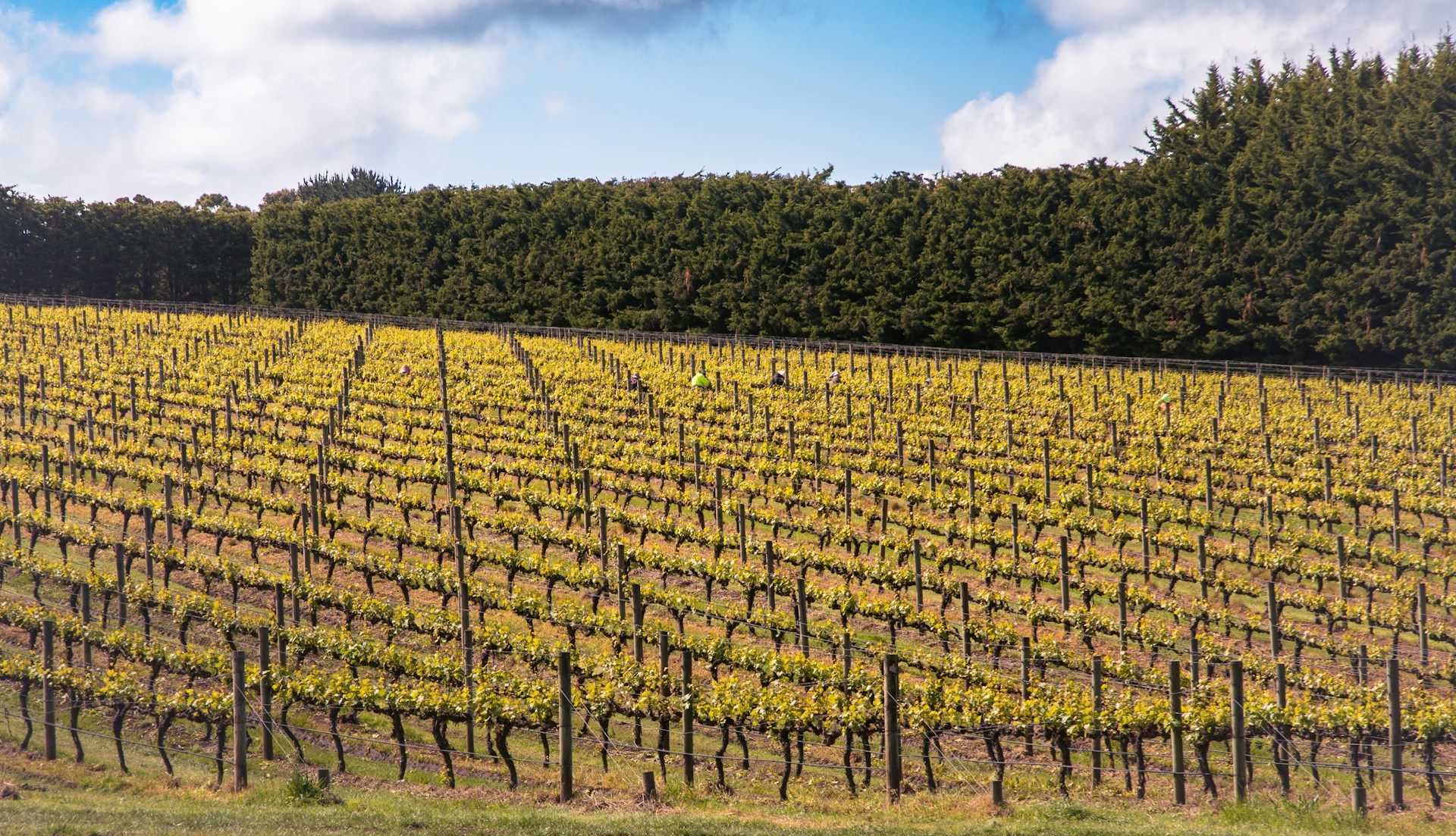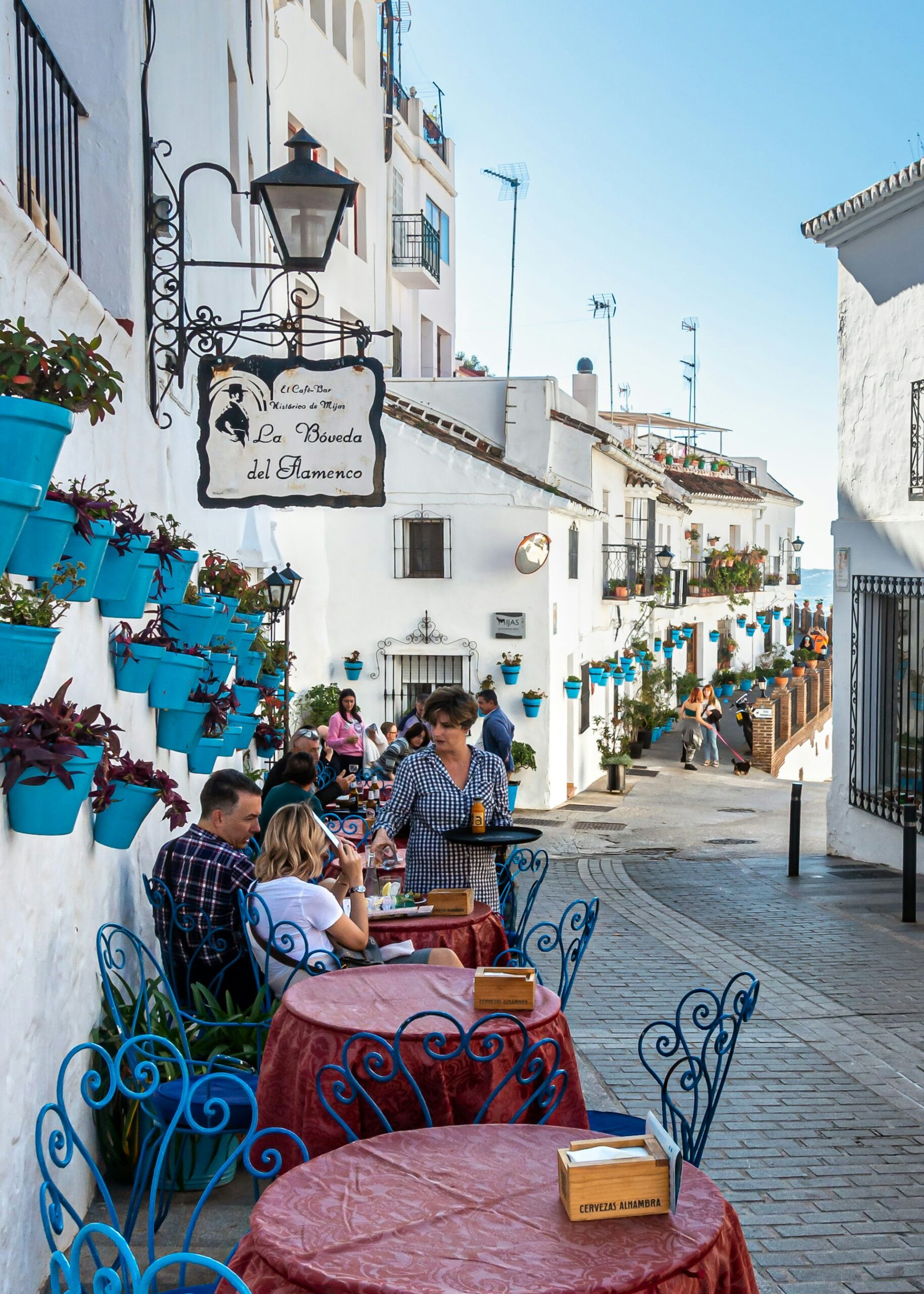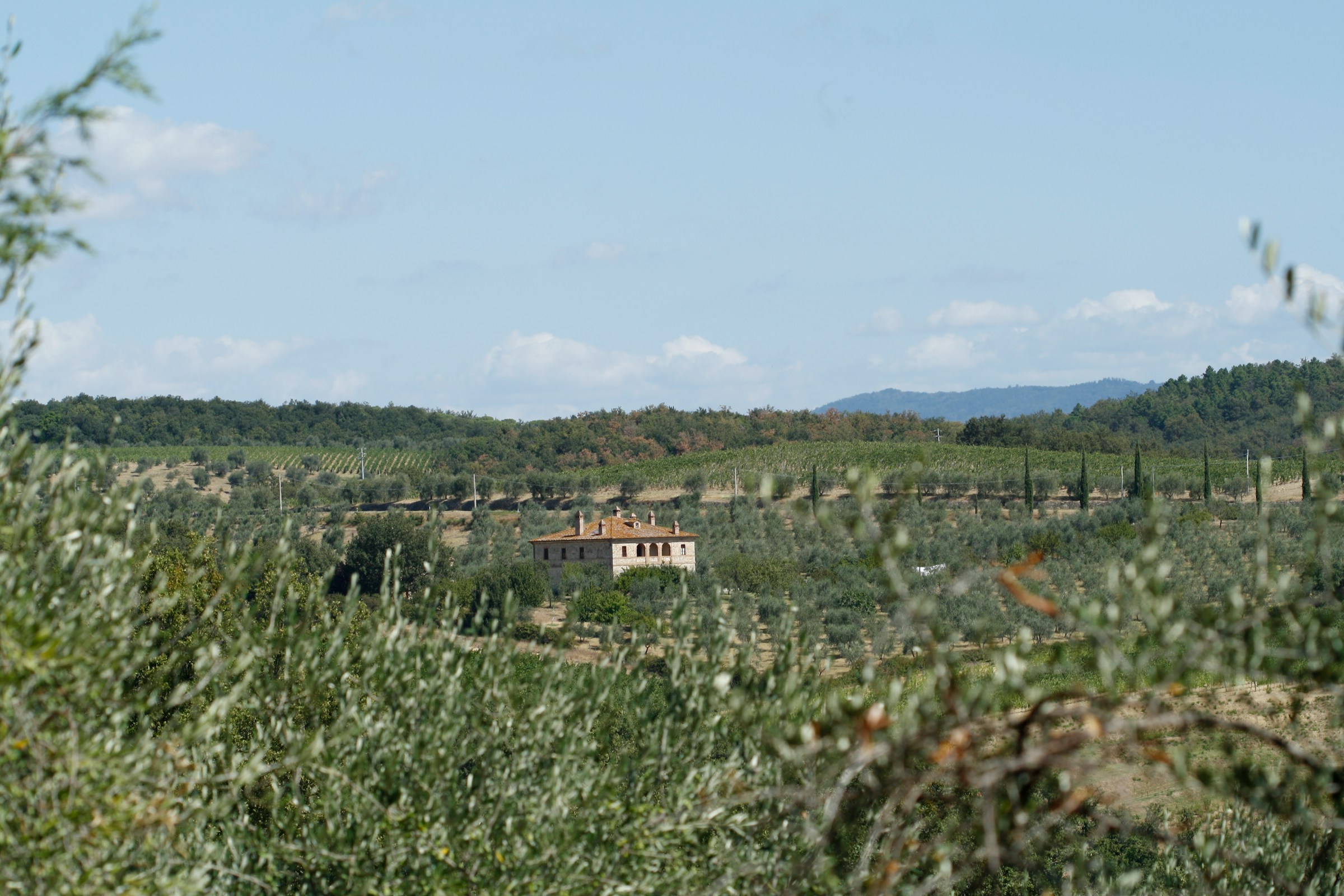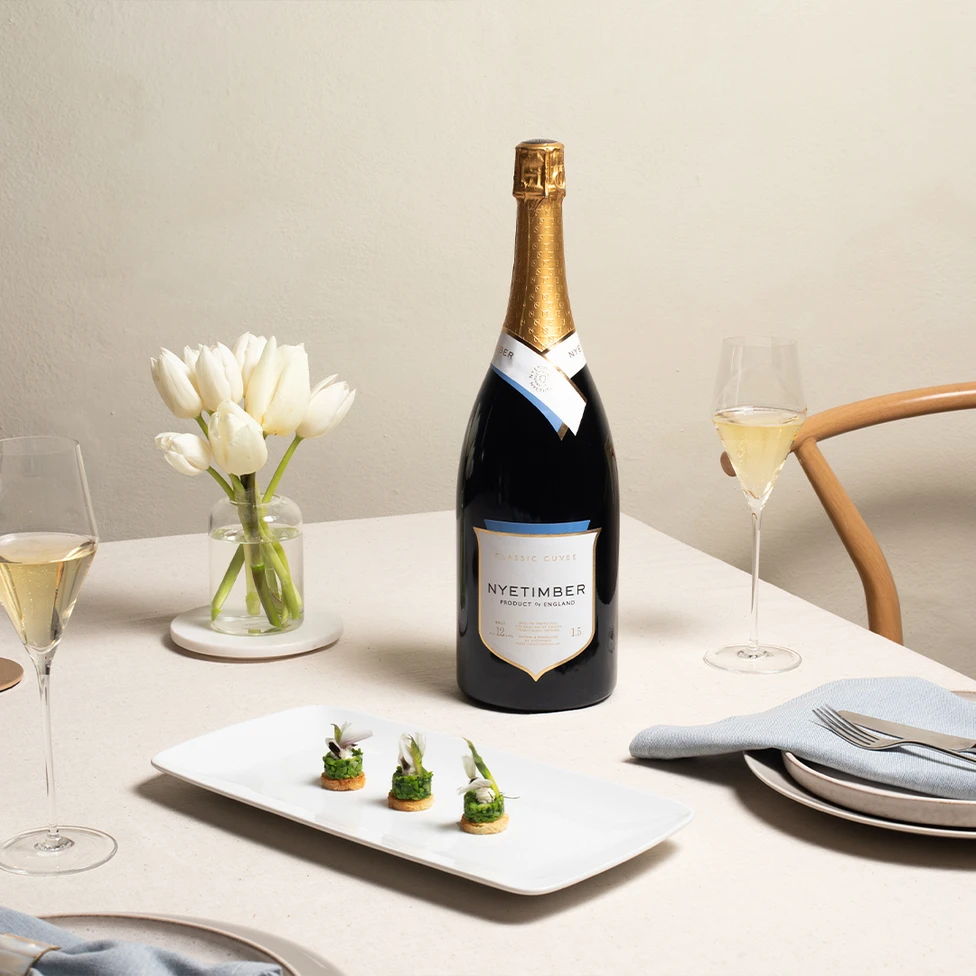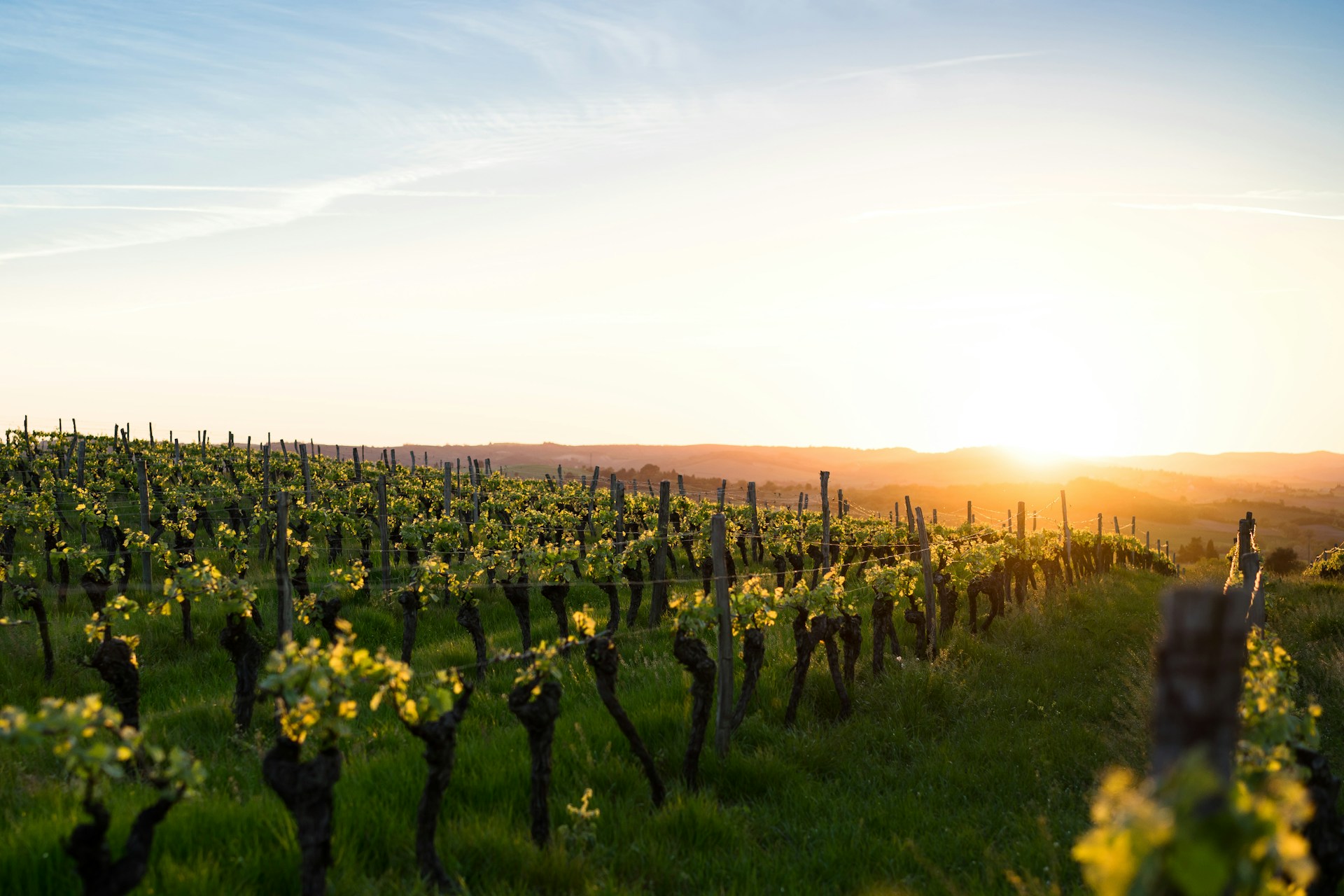To Decant or Not to Decant: A Guide to Decanting
Wine aficionados often find themselves debating the merits of decanting, pondering whether this traditional practice enhances their cherished bottles. The process of decanting involves transferring wine from its bottle to another vessel, typically a decanter, which is designed to enhance the wine’s character and flavour. But is this age-old tradition truly beneficial for all wines? Let’s explore the intricacies of decanting, its benefits, and whether certain types and ages of wine benefit more from it.
The Art and Science of Decanting
Decanting wine serves two primary purposes: aeration and sediment removal. Understanding these can help demystify the process and reveal its significance.
Aeration: Enhancing Aromas and Flavours
When wine is exposed to air, it undergoes a process called aeration. This exposure to oxygen can help to release volatile compounds, enhancing the wine's aromas and flavours. This is particularly beneficial for wines that have been bottled for a long time, as they can often be ‘closed’ or ‘tight’ initially, with their full bouquet and taste profile hidden.
Aeration helps in:
- Softening Tannins: Tannins are the compounds in wine that can create a dry, puckering sensation. In young, robust red wines, tannins can be quite pronounced. Decanting can help soften these tannins, making the wine more palatable.
- Releasing Aromas: Complex wines often have layers of aromas that need time and air to fully express themselves. Decanting allows these aromas to develop, providing a more profound sensory experience.
- Evolving Flavours: The exposure to oxygen can help in developing the wine’s flavours, transforming it from a flat or muted profile to a more dynamic and rich taste.
Sediment Removal: Achieving Clarity
Older wines, particularly aged reds and vintage ports, can develop sediment over time. Sediment is harmless but can be unpleasant to drink. Decanting allows you to leave the sediment behind in the bottle, resulting in a clearer and more aesthetically pleasing wine in the decanter.
Which Wines Benefit from Decanting?
Not all wines benefit equally from decanting. The type and age of the wine play crucial roles in determining whether decanting is necessary or advantageous.
Young Red Wines
Young, tannic red wines are prime candidates for decanting. These wines, often from varietals like Cabernet Sauvignon, Syrah, or Nebbiolo, can be harsh and astringent when first opened. Decanting can help mellow the tannins and integrate the flavours, making the wine more enjoyable to drink.
Aged Red Wines
Aged red wines, especially those that have been cellared for many years, can greatly benefit from decanting to remove sediment and allow the wine to breathe. However, these wines are delicate, and over-decanting can lead to a loss of their subtle aromas and flavours. For such wines, a gentle decanting process of about 30 minutes to an hour is often sufficient.
White Wines
White wines are generally not decanted as frequently as reds. However, some full-bodied white wines, such as Chardonnay or white Burgundy, can benefit from brief decanting to enhance their aromas and soften any sharp edges. Young and vibrant white wines, like Sauvignon Blanc or Riesling, are typically best enjoyed straight from the bottle without decanting.
Sparkling Wines
Sparkling wines, including Champagne, are generally not decanted. The process can cause them to lose their effervescence, which is a key characteristic of these wines. However, some experts suggest that very young and overly carbonated sparkling wines can benefit from a brief decanting to release excess carbonation and reveal more nuanced flavours.
Natural Wines
Natural wines, which are often made with minimal intervention and can have unusual aromas or flavours, can benefit from decanting. The process can help dissipate any initial off-putting aromas and allow the wine’s true character to shine through.
How to Decant Wine Properly
Decanting wine might seem straightforward, but there are techniques to ensure the best results:
- Choose the Right Decanter: The shape and size of the decanter can affect the aeration process. A wide-bottomed decanter allows more surface area for the wine to interact with air, making it ideal for young, tannic wines. For older wines, a more slender decanter is preferable to minimise excessive exposure to oxygen.
- Let the Bottle Stand Upright: Before decanting, let the wine bottle stand upright for a few hours (or even a day) to allow any sediment to settle at the bottom.
- Pour Slowly and Steadily: When pouring the wine into the decanter, do so slowly and steadily. This helps avoid disturbing the sediment. Stop pouring once you see sediment approaching the neck of the bottle.
- Timing is Key: The duration of decanting varies based on the type and age of the wine. Young red wines may benefit from several hours of decanting, while older wines might need just 30 minutes. Keep in mind that over-decanting can lead to oxidation, which can deteriorate the wine.
- Taste as You Go: To ensure the wine reaches its optimal state, taste it periodically while it is decanting. This helps gauge how much more time it might need.
The Debate: To Decant or Not to Decant
While the benefits of decanting are evident, it remains a topic of debate among wine enthusiasts and professionals. Some argue that certain wines do not require decanting and that it can even be detrimental in some cases.
Arguments Against Decanting
- Delicate Wines: Some delicate, older wines can lose their subtlety and finesse if exposed to too much oxygen. In such cases, decanting should be minimal or skipped entirely.
- Natural Evolution: Some wine lovers prefer to experience the wine’s natural evolution in the glass, observing how it changes over time without the intervention of decanting.
- Risk of Over-Oxidation: There’s always a risk of over-oxidation, which can flatten the wine’s flavours and aromas, particularly with older or more fragile wines.
Arguments For Decanting
- Enhanced Experience: For many, the enhanced aromas, softened tannins, and evolved flavours achieved through decanting significantly improve the overall wine experience.
- Aesthetic Pleasure: The use of a decanter can add a touch of elegance and ceremony to wine service, enhancing the enjoyment and appreciation of the wine.
- Practical Benefits: Removing sediment and allowing the wine to breathe can transform a potentially unpleasant bottle into a delightful experience.
Ultimately, the decision to decant or not to decant is a personal one, influenced by the type and age of the wine, as well as individual preferences. While there are clear benefits to decanting, particularly for young, tannic red wines and those with sediment, it is not a one-size-fits-all solution. Wine lovers should experiment with decanting to discover how it affects different wines and enhances their enjoyment.
In the end, whether you choose to decant or not, the goal remains the same: to savour and appreciate the complexity and beauty of wine. So, the next time you uncork a cherished bottle, consider the wine’s unique characteristics and your own preferences. And remember, the journey of wine appreciation is as much about personal discovery as it is about tradition. Cheers!
Top 10 French Cheese & Wine Pairings
France is renowned for its culinary excellence, and its cheeses are no exception. With a rich variety of flavours, textures, and aromas, French cheeses are a delight to the senses. But what could make these cheeses even better? The perfect wine pairing, of course! Join us as we explore the top 10 French cheeses and the wines that complement them best.
1. Camembert

Cheese: Camembert is a soft, creamy cheese with a white, bloomy rind. It hails from Normandy and is known for its rich, earthy flavours and smooth texture.
Wine Pairing: A classic pairing for Camembert is a Chardonnay. The buttery and slightly oaky notes of a good Chardonnay complement the creaminess of the cheese beautifully. Alternatively, try a Norman cider for a regional pairing that's both refreshing and slightly sweet.
2. Brie de Meaux
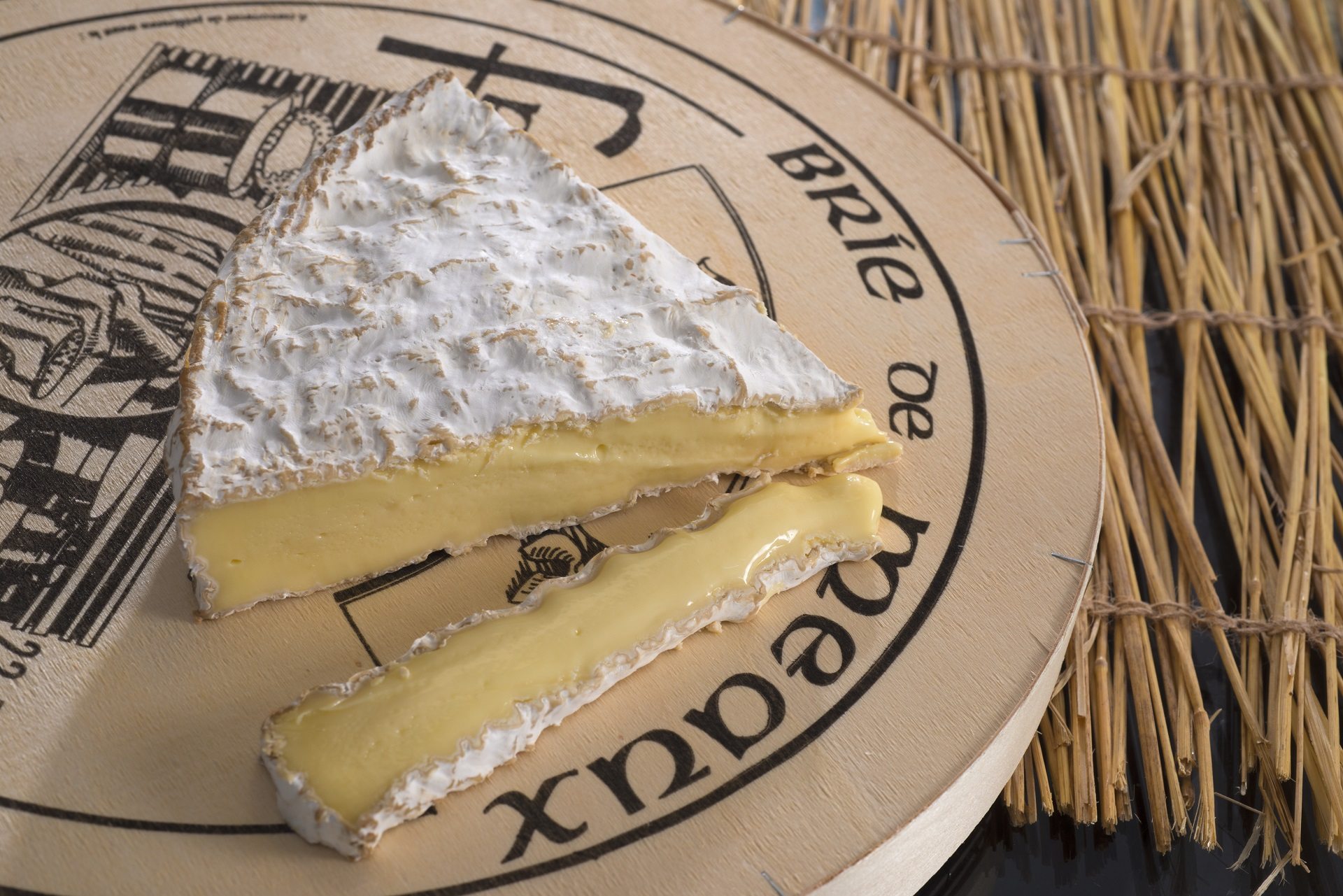
Cheese: Brie de Meaux is another soft cheese with a bloomy rind. It is often described as earthy and mushroomy with a luxurious, creamy interior.
Wine Pairing: Pair Brie de Meaux with a Champagne or a sparkling wine. The acidity and effervescence of the bubbles cut through the rich creaminess of the Brie, creating a delightful contrast.
3. Roquefort
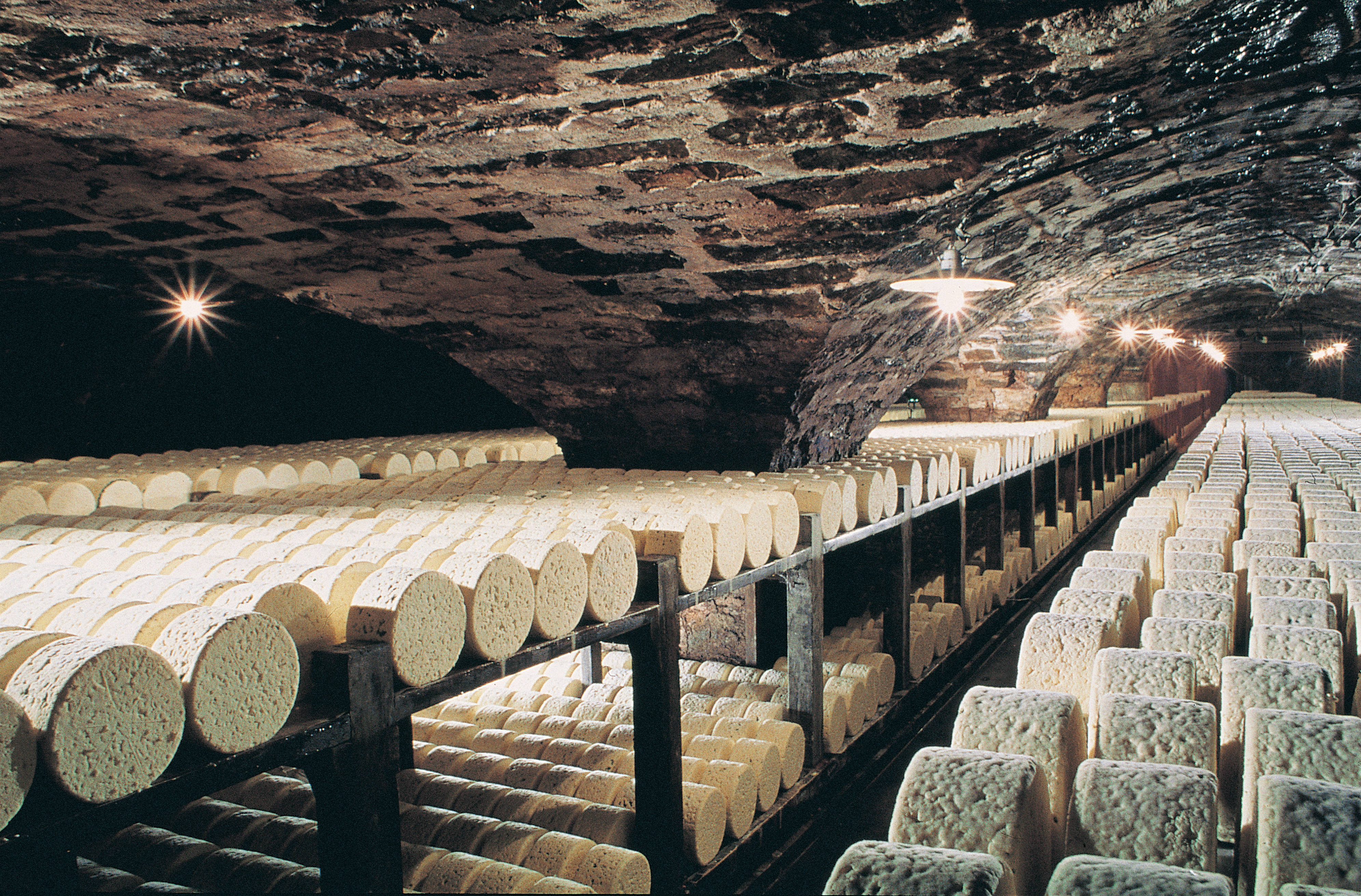
Cheese: Roquefort is a blue cheese made from sheep's milk and aged in the limestone caves of Roquefort-sur-Soulzon. It has a strong, tangy flavour with a creamy, crumbly texture.
Wine Pairing: The bold flavours of Roquefort pair wonderfully with a Sauternes, a sweet dessert wine from Bordeaux. The sweetness of the Sauternes balances the saltiness and intensity of the Roquefort.
4. Comté

Cheese: Comté is a hard cheese made from unpasteurised cow's milk in the Jura region. It has a nutty, slightly sweet flavour and a firm texture.
Wine Pairing: Comté pairs excellently with a Vin Jaune from the Jura region. The oxidative notes and complexity of Vin Jaune complement the nutty flavours of Comté. Alternatively, try a white Burgundy for a more conventional pairing.
5. Munster
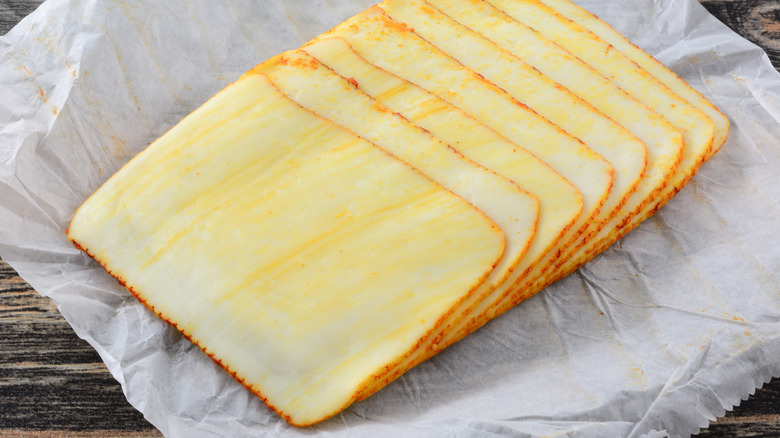
Cheese: Munster is a strong-smelling, washed-rind cheese from the Alsace region. It has a pungent aroma and a rich, tangy flavour.
Wine Pairing: Pair Munster with an Alsace Gewürztraminer. The aromatic and slightly sweet profile of Gewürztraminer balances the strong, tangy flavours of Munster. A dry Riesling from Alsace also works well.
6. Pont-l'Évêque
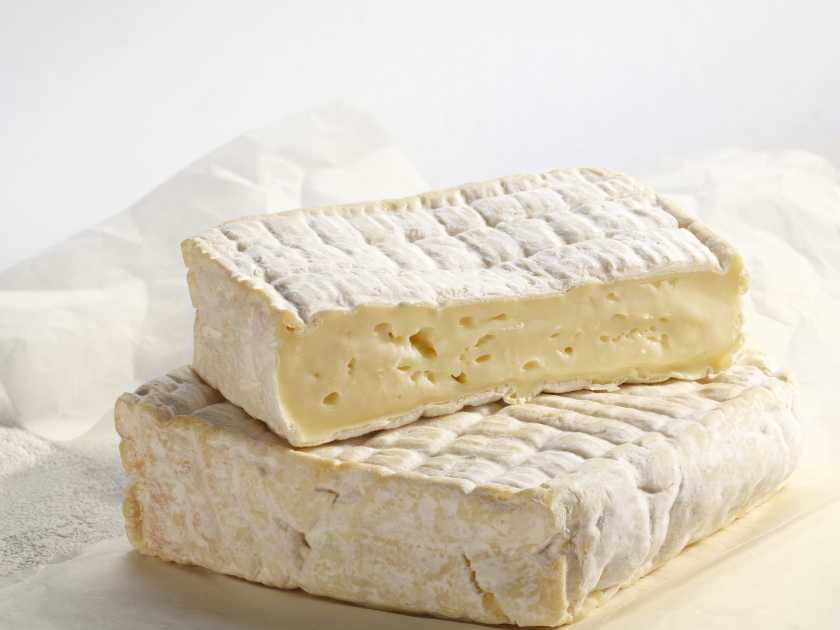
Cheese: Pont-l'Évêque is a soft, washed-rind cheese from Normandy. It has a creamy texture and a strong, earthy flavour.
Wine Pairing: A Pinot Noir from Burgundy is a great match for Pont-l'Évêque. The light tannins and red fruit flavours of Pinot Noir complement the earthy notes of the cheese. For a white option, try a Chablis.
7. Reblochon
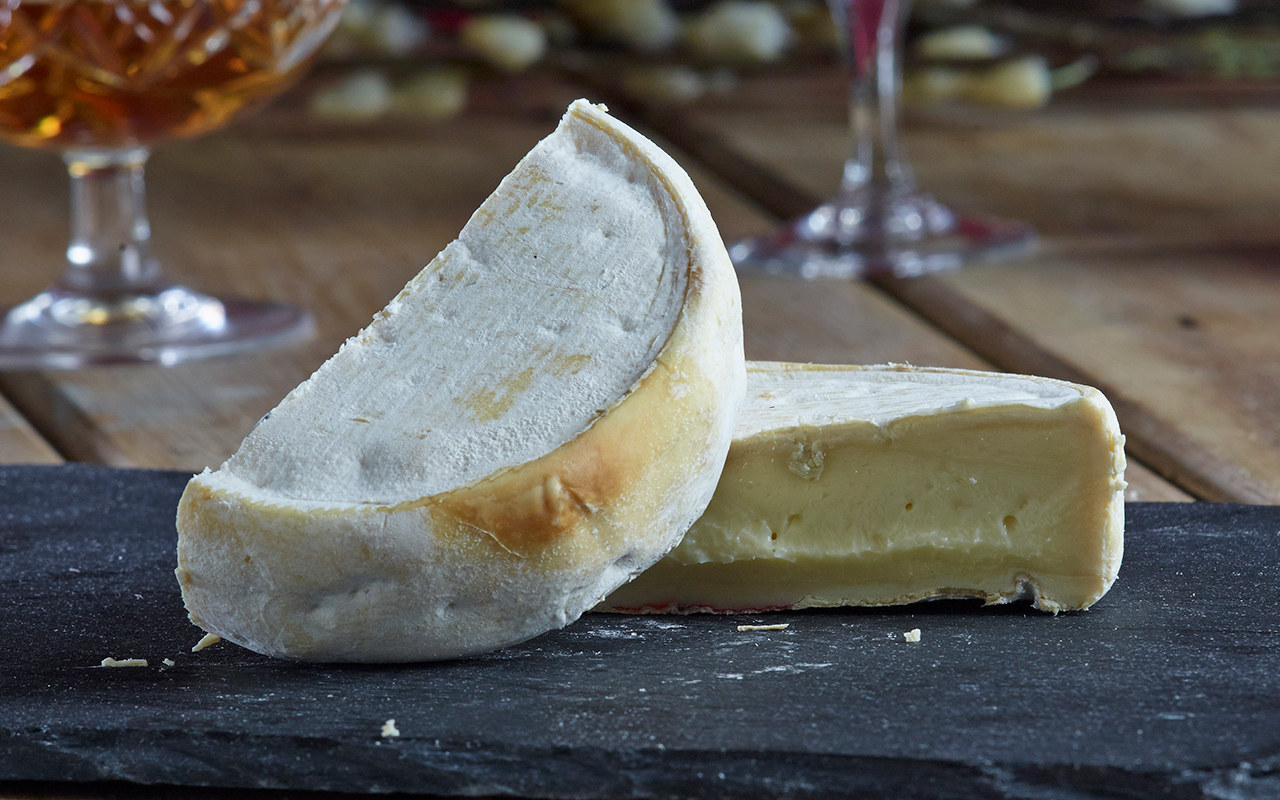
Cheese: Reblochon is a soft, washed-rind cheese from the Savoie region. It has a creamy, velvety texture and a mild, slightly nutty flavour.
Wine Pairing: Pair Reblochon with a Chardonnay from the Savoie region or a dry white wine from the Rhône Valley. The acidity and minerality of these wines enhance the mild flavours of Reblochon.
8. Époisses

Cheese: Époisses is a pungent, soft cheese with a washed rind, hailing from Burgundy. It is known for its strong aroma and rich, creamy texture.
Wine Pairing: The robust flavours of Époisses pair well with a Pinot Noir from Burgundy. The wine's acidity and fruitiness balance the strong, creamy flavours of the cheese. For a white option, try a Meursault.
9. Chèvre (Goat Cheese)

Cheese: Chèvre is a term for goat cheese, which can vary in texture from soft and creamy to firm and crumbly. It has a tangy, slightly earthy flavour.
Wine Pairing: Fresh goat cheese pairs wonderfully with a Sauvignon Blanc from the Loire Valley. The crisp acidity and herbaceous notes of the wine complement the tanginess of the cheese. For aged goat cheese, try a Chenin Blanc.
10. Tomme de Savoie
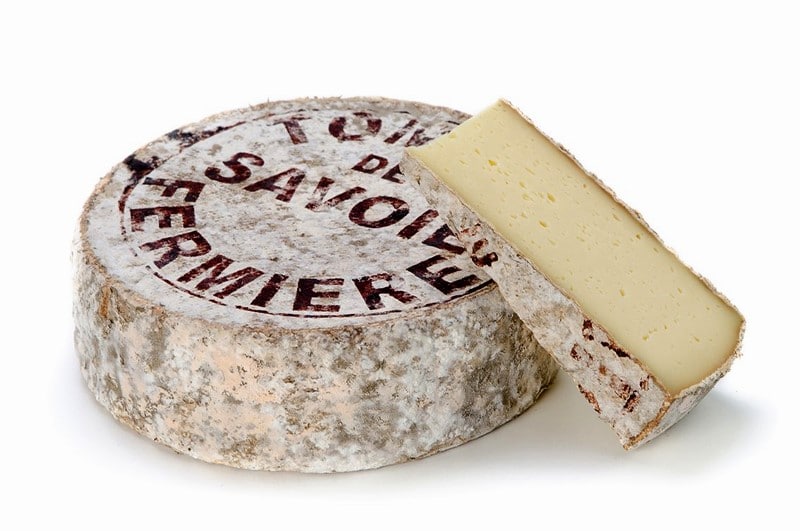
Cheese: Tomme de Savoie is a semi-soft cheese from the Savoie region. It has a rustic, earthy flavour with a hint of nuttiness and a smooth, creamy texture.
Wine Pairing: Pair Tomme de Savoie with a Gamay from Beaujolais or a Mondeuse from Savoie. The light, fruity flavours of Gamay or the peppery notes of Mondeuse complement the rustic qualities of the cheese.
Has the Bubble Finally Burst for Champagne?
Over the past 18 months, the Champagne industry has faced significant challenges, leading many to wonder if the bubble has finally burst on this iconic luxury product. Once celebrated for its resilience and steady growth, Champagne has seen a dramatic shift in its fortunes, marked by declining sales and shifting consumer preferences. While the glamour and prestige of Champagne remain intact, various economic and market dynamics have contributed to its recent struggles, suggesting that there might indeed be less to celebrate and cheer about.
From January 2023 to mid-2024, Champagne sales experienced a notable downturn. After riding high on two years of record growth, the industry was hit hard by an 8.2% drop in sales in 2023. This downward trend continued into the first quarter of 2024, with a further 17.1% reduction in sales volume compared to the same period in 2023 . Economic pressures, including rising costs of production, have driven up Champagne prices by 10-12%, causing consumers to reconsider their spending on luxury beverages .
The market has also seen a strategic pivot towards higher-value cuvées, with non-vintage Champagnes, which make up the bulk of sales, experiencing a significant decline. In contrast, prestige cuvées and Brut Nature categories have grown in value, particularly in export markets like Asia and the United States . Traditional markets such as France, the USA, and the UK have experienced substantial drops in sales. However, emerging markets in Southeast Asia, South Korea, and parts of Africa have shown impressive growth percentages, despite their smaller overall volumes .
In addition to economic challenges, changing consumer behaviours have impacted Champagne sales. The global economic situation, characterised by higher interest rates and economic uncertainties, has dampened consumer sentiment. People simply have fewer reasons to pop open a bottle of Champagne, and even major players like LVMH reported a 12% drop in revenue for its wine and spirits division in the first half of 2024 .
Comparing with Other Sparkling Wines: Prosecco, Cava, and English Sparkling Wine
Prosecco
While Champagne has struggled, Prosecco has seen a different trend. The Prosecco market has been growing robustly, driven by its affordability and appeal to younger consumers. In 2023, Prosecco sales increased significantly, particularly in markets like the UK and the USA, where consumers are looking for budget-friendly yet festive alternatives. According to reports, the global Prosecco market is expected to continue growing, benefiting from its lower price point and versatile use in cocktails like the popular Aperol Spritz.
Cava
Cava, the Spanish sparkling wine, has also seen a resurgence. The market for Cava has grown due to its combination of traditional production methods and competitive pricing. Cava is increasingly being recognized for its quality, with premium Cava gaining popularity in international markets. Recent trends show an uptick in sales, especially for higher-end Cava, as consumers seek value without compromising on quality.
English Sparkling Wine
English sparkling wine has been one of the rising stars in the sparkling wine sector. Benefiting from climate change, which has improved grape growing conditions in the UK, English sparkling wines have been winning international accolades and gaining market share. Sales of English sparkling wine have grown steadily, with a notable increase in exports to markets such as the USA and Japan. The growth is driven by the wine's quality and the increasing global interest in diverse and locally-produced sparkling wines.
Despite these challenges, the Champagne industry is also focusing on sustainability and innovation. Producers are moving towards greener packaging solutions and experimenting with new grape varieties and production methods to maintain long-term excellence and appeal to environmentally conscious consumers .
While Champagne grapples with these issues, other sparkling wines like Prosecco, Cava, and English sparkling wine have seen different trends. The overall sparkling wine sector remains dynamic and diverse, suggesting that there is still plenty of fizz left in the market, even if Champagne itself is facing some bubbles of trouble.
Australia: Gold Medals and Shiraz
Australia, a country known for its stunning landscapes, vibrant culture, and sporting prowess, is also a powerhouse in the world of wine. As we continue our "Around the World in a Glass" series celebrating the 2024 Olympics, let's raise a glass to the bold and diverse wines of Australia. From the iconic Shiraz and elegant Chardonnay to the lesser-known but equally delightful varieties, Australia offers a wine journey that is as exciting as it is flavorful. In this post, we'll explore Australia's renowned wine regions, the unique characteristics of their wines, and perfect food pairings to enhance your tasting experience.
Barossa Valley: The Home of Shiraz
The Barossa Valley, located in South Australia, is one of the country's most famous wine regions, renowned for its powerful and full-bodied Shiraz. This region, with its warm climate and rich soils, produces wines that are bold, rich, and packed with flavor.
Barossa Shiraz
Barossa Shiraz is characterized by its deep color, intense fruit flavors, and robust structure. These wines often display notes of blackberry, plum, chocolate, and spice. They are perfect for aging, developing complex flavors over time. Pair a Barossa Shiraz with hearty dishes like grilled steak, barbecued ribs, or lamb chops for a match made in heaven.
Other Varieties in Barossa
While Shiraz is the star, Barossa Valley also produces excellent Grenache, Mourvèdre, and Cabernet Sauvignon. These wines offer a range of flavors and styles, from the juicy and approachable Grenache to the structured and age-worthy Cabernet Sauvignon. Enjoy these wines with dishes like slow-cooked pork, roasted vegetables, or rich casseroles.
Margaret River: A Coastal Gem
Margaret River, located in Western Australia, is celebrated for its elegant and refined wines, particularly Chardonnay and Cabernet Sauvignon. The region's maritime climate and diverse soils contribute to the unique character of its wines.
Margaret River Chardonnay
Margaret River Chardonnay is known for its balance, elegance, and complexity. These wines often display flavors of citrus, stone fruit, and subtle oak, with a refreshing acidity and a long finish. Pair a Margaret River Chardonnay with seafood dishes like grilled prawns, scallops, or creamy pasta for a delightful experience.
Margaret River Cabernet Sauvignon
Margaret River Cabernet Sauvignon is renowned for its structure, depth, and longevity. These wines typically exhibit flavors of blackcurrant, mint, and cedar, with firm tannins and great aging potential. Enjoy a glass of Margaret River Cabernet Sauvignon with dishes like beef Wellington, roast lamb, or aged cheeses.
Hunter Valley: Pioneers of Australian Wine
Hunter Valley, located in New South Wales, is one of Australia's oldest wine regions, famous for its distinctive Semillon and Shiraz. The region's warm climate and unique terroir contribute to the character and longevity of its wines.
Hunter Valley Semillon
Hunter Valley Semillon is a unique and highly regarded wine, known for its ability to age gracefully. In its youth, Hunter Semillon is light and crisp, with flavors of citrus and green apple. As it ages, it develops rich, toasty, and honeyed characteristics. Pair Hunter Valley Semillon with fresh oysters, grilled fish, or light salads.
Hunter Valley Shiraz
Hunter Valley Shiraz is often lighter and more elegant compared to its Barossa counterpart, with flavors of red berries, spice, and earthy undertones. These wines are versatile and food-friendly, pairing well with dishes like roasted chicken, duck, or mushroom risotto.
Yarra Valley: Cool Climate Elegance
Yarra Valley, located in Victoria, is known for its cool climate and diverse range of wines, particularly Pinot Noir and Chardonnay. The region's cool temperatures and varied terroir result in wines of great finesse and complexity.
Yarra Valley Pinot Noir
Yarra Valley Pinot Noir is celebrated for its elegance, bright acidity, and complex flavors of red cherry, raspberry, and spice. These wines are often lighter in body but rich in character, making them a perfect match for dishes like roasted duck, pork belly, or grilled salmon.
Yarra Valley Chardonnay
Yarra Valley Chardonnay is known for its refined structure, crisp acidity, and flavors of citrus, white peach, and subtle oak. These wines are versatile and food-friendly, pairing well with dishes like seafood, chicken, or creamy pasta dishes.
Clare Valley: Riesling Paradise
Clare Valley, located in South Australia, is renowned for its exceptional Riesling wines. The region's cool climate and high elevation provide ideal conditions for producing crisp, aromatic Rieslings.
Clare Valley Riesling
Clare Valley Riesling is known for its purity, intensity, and refreshing acidity. These wines typically exhibit flavors of lime, green apple, and floral notes, with a mineral finish. Enjoy Clare Valley Riesling with dishes like Thai green curry, ceviche, or fresh salads.
Food Pairings: Classic Australian Dishes
Australia's diverse and vibrant culinary scene offers endless opportunities for delightful wine pairings. Here are some classic Australian dishes and their perfect wine pairings:
Barbecued Ribs
The smoky, savory flavors of barbecued ribs are perfectly complemented by a bold and spicy Barossa Shiraz.
Seafood Platter
A fresh and diverse seafood platter, featuring prawns, oysters, and crab, pairs beautifully with a crisp and elegant Margaret River Chardonnay.
Lamb Roast
A traditional Australian lamb roast, with its rich and savory flavors, is a perfect match for a structured and complex Margaret River Cabernet Sauvignon.
Pavlova
This iconic Australian dessert, with its light and airy meringue, fresh fruit, and whipped cream, pairs wonderfully with a refreshing Clare Valley Riesling.
As we celebrate the 2024 Olympics and the spirit of global unity, let's raise a glass to Australia and its incredible wines. From the bold Shiraz of Barossa Valley to the elegant Chardonnays of Margaret River and the distinctive Rieslings of Clare Valley, Australia's wines offer a journey of discovery and delight. Cheers to Australia, its wines, and the Olympic spirit!
Spain: Sipping Rioja with the Running of the Bulls
Spain, a country rich in history, culture, and vibrant traditions, is also one of the world’s leading wine producers. As we continue our "Around the World in a Glass" series celebrating the 2024 Olympics, let's toast to the diversity and passion of Spanish wines. From the renowned Rioja and Ribera del Duero regions to the sparkling Cava and fortified Sherry, Spain offers a wide array of wines that capture the essence of its land and people. In this post, we'll explore Spain's celebrated wine regions, the unique characteristics of their wines, and perfect food pairings to enhance your tasting experience.
Rioja: The Heart of Spanish Wine
Rioja, located in northern Spain, is perhaps the most famous wine region in the country. Known for its high-quality red wines, Rioja is divided into three sub-regions: Rioja Alta, Rioja Alavesa, and Rioja Oriental (formerly Rioja Baja). The primary grape variety used in Rioja is Tempranillo, often blended with Garnacha, Graciano, and Mazuelo.
Classic Rioja Reds
Rioja red wines are known for their balance, elegance, and aging potential. They are categorized into four aging levels: Joven, Crianza, Reserva, and Gran Reserva. Joven wines are young and fresh, while Crianza wines have been aged for at least two years, with one year in oak. Reserva wines are aged for at least three years, with one year in oak, and Gran Reserva wines are aged for a minimum of five years, with two years in oak. Enjoy a classic Rioja with dishes like grilled lamb, chorizo, or Manchego cheese.
White Rioja
While red Rioja wines are more famous, the region also produces excellent white wines from the Viura (Macabeo) grape, often blended with Malvasía and Garnacha Blanca. These wines are fresh, citrusy, and can range from young and vibrant to rich and creamy, depending on the winemaking process. Pair a white Rioja with seafood, tapas, or a Spanish tortilla.
Ribera del Duero: Bold and Intense
Ribera del Duero, located in the heart of Castilla y León, is known for its powerful and structured red wines made primarily from the Tempranillo grape (locally known as Tinto Fino or Tinta del País). The region's high altitude, extreme temperatures, and diverse soils contribute to the intense character of its wines.
Ribera del Duero Reds
Ribera del Duero wines are typically deep, dark, and full-bodied, with flavors of black fruit, spice, and leather. They are often aged in oak barrels, which adds complexity and depth. Pair Ribera del Duero reds with hearty dishes like roast suckling pig, grilled steak, or aged Spanish cheeses.
Cava: Spain's Sparkling Gem
Cava, Spain's answer to Champagne, is a sparkling wine produced primarily in the Penedès region of Catalonia. Made using the traditional method (método tradicional), Cava is crafted from a blend of native Spanish grape varieties, including Macabeo, Xarel-lo, and Parellada.
Types of Cava
Cava is categorized by its sweetness level, from the dry Brut Nature to the sweet Dulce. It is also classified by its aging process: Joven (young), Reserva, and Gran Reserva. The longer the aging process, the more complex and refined the flavors. Enjoy a glass of Cava as an aperitif, or pair it with tapas, seafood, or fried foods.
Sherry: The Fortified Delight
Sherry, produced in the Jerez region of Andalusia, is a unique and versatile fortified wine. Sherry comes in a variety of styles, from the dry and delicate Fino to the rich and sweet Pedro Ximénez.
Types of Sherry
Fino and Manzanilla are dry, pale, and light-bodied, perfect for pairing with olives, almonds, and seafood. Amontillado and Oloroso are darker and more complex, with nutty and caramel flavors, ideal with cured meats, aged cheeses, and hearty stews. Pedro Ximénez is intensely sweet, with flavors of dried fruit and molasses, making it a perfect match for desserts or as a drizzle over vanilla ice cream.
Priorat: The Bold and Beautiful
Priorat, a small but prestigious wine region in Catalonia, is known for its powerful and complex red wines. The region's unique terroir, characterized by its llicorella (slate) soils, contributes to the intensity and minerality of its wines.
Priorat Reds
Priorat reds are typically made from Garnacha and Cariñena grapes, often blended with international varieties like Cabernet Sauvignon and Syrah. These wines are full-bodied, with flavors of black fruit, licorice, and minerals. Pair Priorat wines with robust dishes like grilled lamb, game, or rich stews.
Food Pairings: Classic Spanish Dishes
Spain's rich culinary heritage offers endless opportunities for delightful wine pairings. Here are some classic Spanish dishes and their perfect wine pairings:
Paella
This iconic Spanish rice dish, often made with seafood, chicken, and saffron, pairs beautifully with a refreshing white Rioja or a glass of Cava.
Tapas
Spain's famous small plates, or tapas, offer a variety of flavors and textures. Enjoy a selection of tapas with a versatile Cava or a young, vibrant Rioja.
Jamón Ibérico
This prized Spanish cured ham, with its rich, savory flavor, is perfectly complemented by a glass of Fino or Manzanilla Sherry.
Churros con Chocolate
This beloved Spanish dessert, featuring fried dough dipped in rich chocolate, pairs wonderfully with a sweet and luscious Pedro Ximénez Sherry.
As we celebrate the 2024 Olympics and the spirit of global unity, let's raise a glass to Spain and its rich wine heritage. From the elegant wines of Rioja and Ribera del Duero to the sparkling Cava and fortified Sherry, Spain's wines provide a journey of discovery and delight. Cheers to Spain, its wines, and the Olympic spirit!
Italy: Olympic Glory with a Glass of Vino
Italy, a country synonymous with rich history, art, and culture, is also one of the world’s foremost wine producers. As we continue our "Around the World in a Glass" series celebrating the 2024 Olympics, let's raise a glass to the incredible diversity and tradition of Italian wines. From the rolling hills of Tuscany to the sun-drenched vineyards of Sicily, Italy offers a treasure trove of wines that delight the senses. In this post, we will explore Italy's renowned wine regions, the unique characteristics of their wines, and perfect food pairings to enhance your tasting experience.
Tuscany: The Heart of Italian Wine
Tuscany is one of Italy's most famous wine regions, known for its picturesque landscapes, historic cities, and exceptional wines. The region is home to some of Italy's most renowned wines, including Chianti, Brunello di Montalcino, and Vino Nobile di Montepulciano.
Chianti: The Quintessential Italian Red
Chianti, a wine produced in the Chianti region of Tuscany, is perhaps the most well-known Italian wine. Made primarily from the Sangiovese grape, Chianti wines are known for their bright acidity, red fruit flavors, and hints of herbs and spices. Enjoy a glass of Chianti with classic Italian dishes like spaghetti Bolognese, Margherita pizza, or Tuscan ribollita soup.
Brunello di Montalcino: The King of Tuscany
Brunello di Montalcino, made from 100% Sangiovese grapes in the Montalcino region, is one of Italy's most prestigious wines. These wines are known for their full-bodied structure, rich flavors of dark fruits, and aging potential. Pair Brunello di Montalcino with hearty dishes like Bistecca alla Fiorentina (Florentine steak) or wild boar ragu.
Vino Nobile di Montepulciano: The Noble Wine
Vino Nobile di Montepulciano, another esteemed wine from Tuscany, is made primarily from Sangiovese grapes (known locally as Prugnolo Gentile). This wine is celebrated for its balance, elegance, and complex flavors of cherry, plum, and spice. Enjoy Vino Nobile di Montepulciano with roasted lamb, pecorino cheese, or pappardelle with truffle sauce.
Piedmont: The Land of Nebbiolo
Piedmont, located in northwestern Italy, is renowned for its powerful and complex wines made from the Nebbiolo grape. The region is home to the iconic wines of Barolo and Barbaresco, often referred to as the "king and queen" of Italian wines.
Barolo: The King of Wines
Barolo, made from 100% Nebbiolo grapes, is one of Italy's most celebrated wines. Known for its powerful tannins, high acidity, and complex flavors of tar, roses, and red fruits, Barolo is a wine that rewards patience and aging. Pair Barolo with rich, flavorful dishes like osso buco, truffle risotto, or aged cheeses.
Barbaresco: The Queen of Wines
Barbaresco, also made from Nebbiolo grapes, is often considered a more elegant and approachable counterpart to Barolo. These wines are characterized by their floral aromatics, bright acidity, and flavors of cherry, licorice, and spice. Enjoy Barbaresco with dishes like roasted duck, mushroom pasta, or veal chops.
Veneto: The Home of Prosecco and Amarone
The Veneto region in northeastern Italy is known for its diverse range of wines, from the light and bubbly Prosecco to the rich and robust Amarone della Valpolicella.
Prosecco: Italy's Sparkling Gem
Prosecco, made from the Glera grape, is Italy's most popular sparkling wine. Known for its light, fruity, and refreshing character, Prosecco is perfect for any celebration. Enjoy Prosecco as an aperitif, in a Bellini cocktail, or paired with light appetizers like bruschetta, antipasti, or fresh fruit.
Amarone della Valpolicella: The Rich and Robust
Amarone della Valpolicella is a powerful and full-bodied red wine made from dried Corvina, Rondinella, and Molinara grapes. This wine is known for its intense flavors of dried fruits, chocolate, and spice, with a velvety texture and high alcohol content. Pair Amarone with rich dishes like braised beef, venison stew, or aged Parmesan cheese.
Sicily: The Sun-Drenched Island
Sicily, the largest island in the Mediterranean, boasts a unique and diverse wine scene. The island's warm climate and volcanic soils contribute to the distinct character of its wines, with Nero d'Avola and Etna Rosso being two of the standout varieties.
Nero d'Avola: The Bold Red
Nero d'Avola, Sicily's most famous red grape, produces wines that are bold, fruity, and full-bodied, with flavors of black cherry, plum, and spice. These wines pair beautifully with grilled meats, hearty pasta dishes, and spicy Sicilian cuisine.
Etna Rosso: The Volcanic Expression
Etna Rosso wines, made primarily from the Nerello Mascalese grape, are grown on the slopes of Mount Etna, an active volcano. These wines are known for their bright acidity, fine tannins, and complex flavors of red berries, herbs, and minerals. Pair Etna Rosso with dishes like grilled lamb, caponata, or aged cheeses.
Food Pairings: Classic Italian Dishes
Italy's rich culinary heritage offers endless opportunities for delightful wine pairings. Here are some classic Italian dishes and their perfect wine pairings:
Margherita Pizza
The simplicity and freshness of a Margherita pizza, with its tomato, mozzarella, and basil toppings, pairs perfectly with a crisp and fruity Chianti.
Spaghetti Carbonara
This rich and creamy pasta dish, made with eggs, cheese, pancetta, and pepper, is wonderfully complemented by a glass of Pinot Grigio from Veneto.
Osso Buco
The hearty and flavorful Milanese dish of braised veal shanks pairs beautifully with the powerful tannins and complex flavors of a Barolo.
Tiramisu
This classic Italian dessert, with its layers of coffee-soaked ladyfingers and mascarpone cream, is a delightful match for a sweet and sparkling Moscato d'Asti.
As we celebrate the 2024 Olympics and the spirit of global unity, let's raise a glass to Italy and its rich wine heritage. From the iconic wines of Tuscany and Piedmont to the diverse offerings of Veneto and Sicily, Italy's wines provide a journey of discovery and delight. Cheers to Italy, its wines, and the Olympic spirit!
United Kingdom: Bubbling with Olympic Pride and English Sparkling
While the United Kingdom may not be the first place that comes to mind when you think of wine, it has been making significant strides in the wine industry over the past few decades. The UK's cool climate, chalky soils, and innovative winemakers have combined to produce some exceptional sparkling wines that are now gaining international acclaim. In this post, we'll explore the burgeoning wine regions of the UK, the unique characteristics of their wines, and perfect food pairings to enhance your tasting experience.
The Rise of English Sparkling Wine
England's sparkling wines have been making waves on the global stage, often being compared to and even surpassing some of the best Champagnes from France. The key to this success lies in the UK's unique terroir. The chalky soils of southern England, particularly in counties like Sussex, Kent, and Hampshire, are very similar to those found in the Champagne region of France. This, combined with the cool climate, creates ideal conditions for growing the classic Champagne grape varieties: Chardonnay, Pinot Noir, and Pinot Meunier.
Sussex: The Heart of English Sparkling Wine
Sussex is home to some of the UK's most renowned vineyards and sparkling wine producers. The region's rolling hills and chalky soils provide perfect conditions for viticulture. Notable producers such as Nyetimber and Ridgeview have gained international recognition for their high-quality sparkling wines. These wines are characterized by their vibrant acidity, fine bubbles, and complex flavors of green apple, citrus, and brioche. Pair a Sussex sparkling wine with fresh seafood, particularly oysters or smoked salmon, for a delightful combination.
Kent: The Garden of England
Kent, often referred to as the "Garden of England," is another prominent wine-producing region. Vineyards such as Chapel Down and Gusbourne have been at the forefront of the English wine revolution, producing sparkling wines that rival the best in the world. Kent's sparkling wines are known for their elegance, with flavors of orchard fruits, lemon zest, and toast. They pair beautifully with a variety of dishes, from light salads and goat cheese to more substantial fare like roast chicken or pork.
Hampshire: Rising Star in English Wine
Hampshire is quickly gaining a reputation for its excellent sparkling wines. Producers like Hattingley Valley and Hambledon Vineyard are leading the charge, crafting wines that showcase the region's unique terroir. Hampshire's sparkling wines often display a delicate balance of fruit and acidity, with notes of pear, citrus, and biscuit. Enjoy a Hampshire sparkling wine with classic English dishes like fish and chips or a hearty ploughman's lunch.
Beyond Bubbles: Still Wines in the UK
While sparkling wine has been the star of the UK wine scene, there are also some impressive still wines being produced. English still wines, particularly those made from grape varieties such as Bacchus, Pinot Noir, and Chardonnay, are worth exploring.
Bacchus: England's Signature Grape
Bacchus, a white grape variety, has become something of a signature for English still wines. It produces aromatic wines with fresh, zesty flavors of elderflower, green apple, and citrus. Bacchus wines are perfect for summer sipping and pair well with light, fresh dishes like asparagus, goat cheese salad, or grilled fish.
Pinot Noir: A Cool Climate Classic
Pinot Noir, known for its finicky nature, thrives in the UK's cool climate, producing elegant, light-bodied red wines with flavors of red berries, cherry, and earth. English Pinot Noir pairs beautifully with roasted poultry, mushroom dishes, and soft cheeses.
Chardonnay: Versatile and Elegant
English Chardonnay, both still and sparkling, showcases the versatility and elegance of this grape. Still Chardonnays from the UK often display crisp acidity and flavors of green apple, citrus, and subtle oak. They pair well with dishes like creamy pasta, roast chicken, and seafood.
Food Pairings: Classic British Dishes
The UK's diverse and rich culinary heritage offers a wealth of pairing opportunities for its wines. Here are some classic British dishes and their perfect wine pairings:
Fish and Chips
There's nothing more quintessentially British than fish and chips. The crispy batter and tender fish are perfectly complemented by the bright acidity and fine bubbles of an English sparkling wine, such as those from Sussex or Kent.
Roast Beef and Yorkshire Pudding
A traditional Sunday roast of beef with Yorkshire pudding is a hearty, flavorful dish that pairs wonderfully with a rich, robust English Pinot Noir. The wine's acidity cuts through the richness of the meat, while its berry flavors complement the dish.
Ploughman's Lunch
This classic British meal, consisting of bread, cheese, pickles, and cold meats, is a perfect match for a crisp, aromatic Bacchus. The wine's fresh flavors balance the tangy pickles and rich cheeses, creating a harmonious pairing.
As we celebrate the 2024 Olympics and the spirit of global unity, let's raise a glass to the United Kingdom and its burgeoning wine industry. From the sparkling wines of Sussex, Kent, and Hampshire to the still wines crafted from Bacchus, Pinot Noir, and Chardonnay, the UK's wines offer a delightful journey of discovery. Cheers to the UK, its wines, and the Olympic spirit!
France: A Tour de Vin in the Land of the Olympics
France: A Tour de Vin in the Land of the Olympics
As the host country for the 2024 Olympics, France stands out not only for its rich history and culture but also for its exceptional wine regions. From the rolling vineyards of Bordeaux to the prestigious estates of Burgundy, France offers a diverse and unparalleled wine experience. In this post, we'll take an extensive tour of France's most celebrated wine regions, delve into the history and characteristics of their wines, and suggest delightful food pairings to enhance your tasting experience.
Bordeaux: The Heart of French Wine
Bordeaux, located in southwestern France, is one of the most renowned wine regions in the world. Known for its rich red blends, primarily composed of Cabernet Sauvignon, Merlot, and Cabernet Franc, Bordeaux wines are celebrated for their complexity and aging potential. The region is divided into several sub-regions, each with its own distinct style and reputation.
The Left Bank
The Left Bank of Bordeaux, including the Médoc and Graves, is famed for its powerful and tannic Cabernet Sauvignon-dominant wines. Iconic appellations such as Pauillac, Margaux, and Saint-Estèphe produce some of the world's most prestigious wines. These wines are known for their ability to age gracefully, developing deep, complex flavors over decades. Pair a classic Left Bank Bordeaux with a hearty dish like beef bourguignon or lamb chops to fully appreciate its depth and richness.
The Right Bank
The Right Bank, encompassing areas like Saint-Émilion and Pomerol, is known for its lush, Merlot-based wines. These wines tend to be softer and more approachable in their youth compared to their Left Bank counterparts. Saint-Émilion wines are characterized by their velvety texture and notes of dark fruits, while Pomerol wines are celebrated for their opulence and finesse. Enjoy a glass of Right Bank Bordeaux with dishes like duck confit or mushroom risotto for a perfect pairing.
Entre-Deux-Mers
Situated between the Garonne and Dordogne rivers, Entre-Deux-Mers is renowned for its crisp, refreshing white wines made from Sauvignon Blanc, Sémillon, and Muscadelle. These wines are perfect for summer sipping and pair wonderfully with seafood, salads, and light poultry dishes.
Burgundy: The Land of Pinot Noir and Chardonnay
Burgundy, in eastern France, is famous for its elegant Pinot Noir and Chardonnay wines. The region's unique terroir contributes to the distinct character of its wines, making them highly sought after by collectors and enthusiasts alike. Burgundy is divided into several sub-regions, each with its own unique style and flavor profile.
Côte de Nuits
The Côte de Nuits, part of the Côte d'Or, is the heart of Burgundy's red wine production. It is home to some of the most prestigious Pinot Noir vineyards in the world, including the renowned communes of Gevrey-Chambertin, Vosne-Romanée, and Nuits-Saint-Georges. These wines are known for their complexity, elegance, and ability to age beautifully. Pair a Côte de Nuits Pinot Noir with coq au vin or roasted game for an exquisite dining experience.
Côte de Beaune
The Côte de Beaune, also part of the Côte d'Or, is celebrated for its exceptional Chardonnay wines, particularly from the villages of Puligny-Montrachet, Chassagne-Montrachet, and Meursault. These white wines are known for their richness, minerality, and balance. The Côte de Beaune also produces some excellent Pinot Noir wines, particularly from the village of Pommard. Enjoy a Côte de Beaune Chardonnay with creamy dishes like chicken in white wine sauce or a rich brie cheese.
Chablis
Located to the north of the Côte d'Or, Chablis is renowned for its steely, mineral-driven Chardonnay wines. The cool climate of Chablis imparts a crisp acidity and flinty character to the wines, making them a perfect match for oysters, shellfish, and other seafood dishes.
The Mâconnais
South of the Côte d'Or lies the Mâconnais, known for its approachable and value-driven Chardonnay wines. The wines from the villages of Pouilly-Fuissé and Saint-Véran are particularly noteworthy. These wines are often fruitier and less oaked than their northern counterparts, making them ideal for casual sipping or pairing with lighter fare like grilled chicken or vegetable dishes.
Champagne: The Sparkling Jewel
No celebration is complete without Champagne, the sparkling wine from the region of the same name. Made primarily from Chardonnay, Pinot Noir, and Pinot Meunier, Champagne is synonymous with luxury and celebration. The unique method of production, known as méthode champenoise, involves a secondary fermentation in the bottle, creating the distinctive bubbles.
Types of Champagne
Champagne comes in various styles, from the crisp and refreshing Brut to the richer, sweeter Demi-Sec. Blanc de Blancs Champagne, made exclusively from Chardonnay, is known for its elegance and finesse, while Blanc de Noirs, made from Pinot Noir and Pinot Meunier, tends to be fuller-bodied and more robust. Rosé Champagne, with its delicate pink hue, is perfect for romantic occasions and pairs wonderfully with a wide range of dishes.
Food Pairings
Champagne's high acidity and effervescence make it incredibly versatile with food. Enjoy a flute of Champagne with oysters, caviar, or sushi for a luxurious start to your meal. For a more substantial pairing, try Champagne with fried chicken, truffle fries, or a rich cheese plate. The possibilities are endless, and the experience is always delightful.
Rhône Valley: Diversity in a Bottle
The Rhône Valley offers a diverse range of wines, from the robust Syrah-based reds of the northern Rhône to the rich Grenache blends of the southern Rhône. This region's wines are perfect for pairing with a variety of dishes, from grilled meats to Mediterranean cuisine.
Northern Rhône
The Northern Rhône is home to some of the world's most famous Syrah wines, particularly from appellations such as Côte-Rôtie, Hermitage, and Saint-Joseph. These wines are known for their powerful structure, dark fruit flavors, and savory, peppery notes. Pair a Northern Rhône Syrah with grilled steak, lamb, or hearty stews to bring out the best in both the wine and the dish.
Southern Rhône
The Southern Rhône is known for its blends, particularly those from Châteauneuf-du-Pape, Gigondas, and Côtes du Rhône. These wines are typically made from Grenache, Syrah, and Mourvèdre, resulting in rich, full-bodied wines with flavors of ripe red fruits, spices, and herbs. Enjoy a Southern Rhône wine with dishes like ratatouille, grilled sausages, or a classic Provençal roast chicken.
Loire Valley: The Garden of France
The Loire Valley, often referred to as the "Garden of France," is renowned for its diverse range of wines, from crisp Sauvignon Blancs to elegant Cabernet Francs. This picturesque region, with its stunning châteaux and lush vineyards, offers a wine for every palate.
Sauvignon Blanc from Sancerre and Pouilly-Fumé
The villages of Sancerre and Pouilly-Fumé are famous for their exceptional Sauvignon Blanc wines. These wines are known for their bright acidity, minerality, and notes of citrus and green apple. Pair a Sancerre or Pouilly-Fumé with goat cheese, seafood, or fresh salads for a delightful match.
Chenin Blanc from Vouvray
Vouvray, located in the Touraine district, produces some of the finest Chenin Blanc wines in the world. These wines can range from dry and sparkling to sweet and luscious, offering incredible versatility. A dry Vouvray pairs beautifully with roast pork, while a sweet Vouvray is perfect with fruit-based desserts or a cheese plate.
Cabernet Franc from Chinon
Chinon, also in the Touraine district, is known for its elegant Cabernet Franc wines. These red wines are characterized by their vibrant red fruit flavors, herbaceous notes, and silky tannins. Enjoy a glass of Chinon with dishes like roast duck, grilled vegetables, or a classic French charcuterie board.
Provence: The Rosé Capital
Provence, in southeastern France, is synonymous with rosé wine. The region's sunny Mediterranean climate and picturesque landscapes make it the perfect place to enjoy a glass of refreshing rosé. Provençal rosé is typically light, dry, and bursting with flavors of red fruits and citrus.
Food Pairings
Provençal rosé is incredibly versatile and pairs well with a variety of dishes. Enjoy it with Mediterranean cuisine like grilled fish, ratatouille, or a classic Niçoise salad. It's also perfect for a summer picnic, paired with charcuterie, fresh fruits, and light cheeses.
Alsace: Aromatic Whites
Alsace, located in northeastern France, is known for its aromatic white wines, particularly Riesling, Gewürztraminer, and Pinot Gris. The region's unique blend of French and German influences is reflected in its wines, which are known for their purity, elegance, and ability to pair with a wide range of foods.
Riesling
Alsatian Riesling is typically dry, with high acidity and notes of citrus, green apple, and mineral. It pairs beautifully with seafood, poultry, and dishes with a touch of spice, like Thai or Indian cuisine.
Gewürztraminer
Gewürztraminer is known for its intense aromatics and flavors of lychee, rose petal, and spice. This wine is a fantastic match for rich, flavorful dishes like foie gras, strong cheeses, and Asian cuisine.
Pinot Gris
Alsatian Pinot Gris is rich and full-bodied, with flavors of ripe pear, honey, and spice. It pairs well with dishes like roast pork, creamy pastas, and mushroom-based dishes.
As we celebrate the 2024 Olympics in France, let's also celebrate the incredible wines this country has to offer. Each glass of French wine tells a story of tradition, terroir, and passion, much like the stories of the athletes competing on the world stage. Cheers to France, its wines, and the Olympic spirit!
Useful Links
- French Wine Regions:
- Travel and Tourism Information:
Exploring Gewürztraminer: The Aromatic Gem of the Wine World
Exploring Gewürztraminer: The Aromatic Gem of the Wine World
If you've ever been intrigued by a wine that seems to have a perfume all its own, you might have encountered Gewürztraminer. This white wine, often dubbed the “spicy grape,” is an aromatic delight that offers a unique tasting experience. Whether you’re a seasoned wine enthusiast or just starting to explore different varietals, Gewürztraminer is a must-try. Let’s dive into what makes this wine so special.
A Trip Through History
The name Gewürztraminer sounds fancy, doesn’t it? It comes from the German word "Gewürz," which means spice, and "Traminer," which points to its origins in the village of Tramin in Italy’s South Tyrol region. This grape is actually a mutation of the ancient Traminer variety. Though it’s most famous in Alsace, France, you’ll also find it flourishing in Germany, Austria, Italy, New Zealand, Australia, and the United States.
The Sensory Experience
So, what should you expect when you pour a glass of Gewürztraminer? First, the aroma hits you. It’s incredibly fragrant, with notes of lychee, rose petals, and tropical fruits. You might even catch a hint of ginger or cinnamon. When you take a sip, you’ll notice it has a rich, slightly sweet taste balanced by a touch of acidity. Imagine biting into ripe peaches or apricots, with a drizzle of honey and a sprinkle of spices. And the colour? It’s a gorgeous deep golden hue, hinting at the full-bodied experience to come.
Where It's Grown
Gewürztraminer has found its home in several regions around the world, each bringing its own twist to the grape.
Alsace, France: This is where Gewürztraminer truly shines. The cool climate and varied soils here give the wine its aromatic intensity and complexity. While most Alsace Gewürztraminer is dry, there are sweeter versions like Vendange Tardive and Sélection de Grains Nobles that are highly prized.
Germany: In regions like Pfalz and Baden, you’ll find Gewürztraminer that’s a bit less aromatic but still offers lovely floral and spice notes. These wines can range from dry to sweet, so there’s something for everyone.
Italy: Known as Traminer Aromatico, the Italian version is often fresh and crisp, with a pronounced mineral character. It’s a bit different but equally delightful.
New World Regions: Countries like New Zealand, Australia, and the United States (especially California and Oregon) are also crafting some fantastic Gewürztraminer. These wines often showcase riper fruit flavours and a robust profile.
Famous and Accessible Examples
If you’re looking to try some standout Gewürztraminer wines, here are a few renowned and accessible examples:
- Trimbach Gewürztraminer (Alsace, France): Trimbach is one of the most respected producers in Alsace. Their Gewürztraminer is known for its purity, minerality, and aromatic intensity. It’s widely available and often found in well-stocked wine shops and online retailers like Wine.com.
- Hugel Gewürztraminer (Alsace, France): Another Alsatian classic, Hugel’s Gewürztraminer is a benchmark for the varietal. It offers a balance of fruit and spice, with a refined elegance. Look for it at specialty wine stores and larger online marketplaces.
- Domaines Schlumberger Les Princes Abbés Gewürztraminer (Alsace, France): This wine is known for its richness and complexity, with notes of exotic fruits and spices. It’s available through various wine retailers and online platforms.
- Zind-Humbrecht Gewürztraminer (Alsace, France): Zind-Humbrecht is celebrated for its biodynamic wines. Their Gewürztraminer is opulent and expressive, with a wonderful balance of sweetness and acidity. You can find it at high-end wine shops and online.
- Elk Cove Vineyards Gewürztraminer (Oregon, USA): For a New World example, Elk Cove in Oregon offers a delightful Gewürztraminer that showcases ripe fruit and floral notes with a crisp finish. It’s accessible through many US wine retailers and directly from the winery’s website.
Perfect Pairings
One of the joys of Gewürztraminer is how well it pairs with a variety of foods. Its bold flavours and aromatic profile make it quite versatile.
Spicy Dishes: The natural spiciness of Gewürztraminer is a perfect match for spicy cuisines, especially Asian dishes. Thai, Indian, and Szechuan foods, with their bold flavours and heat, are complemented beautifully by this wine’s fruity and floral notes.
Rich and Creamy: If you’re indulging in rich and creamy dishes like foie gras, pâté, or creamy cheeses (think Munster or Brie), Gewürztraminer’s full body and slight sweetness provide a wonderful balance.
Seafood: This wine also shines with seafood, particularly when there’s a hint of sweetness or spice involved. Scallops, shrimp, or lobster with aromatic herbs and spices are excellent choices.
Fruit-Based Desserts: For those with a sweet tooth, Gewürztraminer is a great companion to fruit-based desserts. Pies, tarts, and compotes featuring peaches, apricots, or tropical fruits can really highlight the wine’s own fruity notes.
Tasting Tips
To fully appreciate Gewürztraminer, serve it chilled—around 8-10°C is perfect. Use a glass with a wide bowl and a narrow rim to concentrate its delightful aromas. Take a moment to swirl the wine and inhale deeply before you taste. This will enhance your sensory experience. And don’t be afraid to experiment with different food pairings to see what you like best.
Where to Find Gewürztraminer
Finding a good bottle of Gewürztraminer is easier than you might think. Here are a few tips on where to look:
- Local Wine Shops: Specialty wine shops often carry a selection of Gewürztraminer, especially those from Alsace. Don’t hesitate to ask for recommendations—they’re usually happy to help you find what you’re looking for.
- Online Retailers: Websites like Wine.com, Vivino, and Total Wine offer a wide range of Gewürztraminer wines from different regions. You can often read reviews and get detailed information about each wine.
- Direct from Wineries: Many wineries offer direct sales through their websites. This can be a great way to get access to limited releases and special bottlings.
- Wine Clubs: Joining a wine club can introduce you to new varietals, including Gewürztraminer. Many clubs offer curated selections that highlight wines from around the world.
Gewürztraminer is a wine that offers a sensory adventure, from its intense aromas to its rich and flavourful palate. Whether you’re enjoying a classic Alsace bottle or exploring New World variations, it’s a wine that leaves a lasting impression. So next time you’re in the mood for something unique, grab a bottle of Gewürztraminer and let its aromatic charm captivate you. Cheers!
The Best Wine Bars in Manchester: Discovering Hidden Gems and Popular Spots
Manchester, a city known for its rich industrial heritage and vibrant cultural scene, also boasts a thriving wine bar scene. Whether you’re a local or just visiting, there’s no shortage of fantastic places to enjoy a glass of wine. From cosy, intimate settings to bustling, trendy hotspots, Manchester’s wine bars offer something for every palate. Join us as we explore some of the best wine bars in Manchester, uncovering hidden gems and popular spots where you can savour a delightful glass of vino.
1. Salut Wines
Located on Cooper Street, Salut Wines is a haven for wine enthusiasts. This stylish wine bar offers a relaxed and welcoming atmosphere, perfect for both casual drinkers and connoisseurs. With an extensive selection of wines available by the glass or bottle, Salut Wines prides itself on its diverse range, featuring wines from both well-known and obscure regions. The self-service Enomatic machines allow you to sample a variety of wines, making it an excellent place to discover new favourites.
Address: 11 Cooper St, Manchester M2 2FW
Website: Salut Wines
2. Hanging Ditch
Nestled in the heart of Manchester’s Cathedral Quarter, Hanging Ditch is a boutique wine merchant and bar known for its carefully curated selection of wines. This cosy spot is perfect for an intimate evening of wine tasting, with knowledgeable staff on hand to guide you through their impressive collection. Hanging Ditch also hosts regular wine tasting events, making it a great place to expand your wine knowledge.
Address: 14 Cateaton St, Manchester M3 1SQ
Website: Hanging Ditch
3. Evuna
Evuna is a must-visit for lovers of Spanish wine and cuisine. With two locations in Manchester, on Deansgate and in the Northern Quarter, Evuna offers an authentic Spanish experience, complete with an extensive list of wines sourced directly from Spain. Enjoy a glass of Rioja or Albariño paired with delicious tapas in a warm and inviting setting. Evuna also offers wine tastings and dinners, perfect for those looking to delve deeper into Spanish wines.
Address (Deansgate): 277-279 Deansgate, Manchester M3 4EW
Address (Northern Quarter): 79 Thomas St, Manchester M4 1LQ
Website: Evuna
4. The Chorlton Green Brasserie
For a more laid-back experience, head to The Chorlton Green Brasserie. This charming wine bar and restaurant in Chorlton offers a carefully selected wine list, featuring organic and biodynamic options. The Chorlton Green Brasserie is known for its relaxed atmosphere and excellent service, making it a perfect spot for a leisurely glass of wine with friends. The menu also includes a range of delicious dishes, making it a great choice for a meal and a drink.
Address: 562 Wilbraham Rd, Chorlton-cum-Hardy, Manchester M21 9LB
Website: The Chorlton Green Brasserie
5. Grape to Grain
With locations in Prestwich and Ramsbottom, Grape to Grain is a wine bar and shop that focuses on making wine accessible and enjoyable for everyone. The friendly and knowledgeable staff are always ready to help you find the perfect bottle, whether you’re a seasoned wine lover or a curious beginner. Grape to Grain also hosts regular tasting events and wine evenings, providing a fantastic opportunity to explore new wines and learn more about the world of wine.
Address (Prestwich): 821-823 Bury New Rd, Prestwich, Manchester M25 9XY
Address (Ramsbottom): 16 Bolton St, Ramsbottom, Bury BL0 9HX
Website: Grape to Grain
6. Flok
Flok is a cosy, eclectic wine bar located in the Northern Quarter. With its vintage décor and laid-back vibe, Flok is the perfect place to unwind with a glass of wine. The wine list is extensive, featuring a range of organic and natural wines from around the world. The knowledgeable staff are passionate about wine and always happy to offer recommendations. In addition to its impressive wine selection, Flok also serves a variety of small plates and charcuterie boards, making it an ideal spot for a relaxed evening out.
Address: 5 Stevenson Square, Manchester M1 1DN
Website: Flok
7. Evelyn’s Café Bar
Located in the Northern Quarter, Evelyn’s Café Bar is a chic and contemporary spot that offers a fantastic wine list alongside its delicious food menu. With a focus on fresh, seasonal ingredients, Evelyn’s pairs its wines perfectly with its innovative dishes. The wine list includes a diverse selection of organic and biodynamic wines, making it a great place to explore new flavours in a stylish setting.
Address: 44 Tib St, Manchester M4 1NB
Website: Evelyn’s Café Bar
8. Wolf at the Door
Wolf at the Door, located in the Northern Quarter, is a trendy and vibrant wine bar that offers an exciting selection of wines alongside craft beers and creative cocktails. The wine list is thoughtfully curated, featuring both classic favourites and lesser-known gems. With its relaxed atmosphere and innovative menu, Wolf at the Door is a great place to enjoy a glass of wine and some tasty bites.
Address: 30-32 Thomas St, Manchester M4 1ER
Website: Wolf at the Door
9. Bakerie
Bakerie is a lively wine bar and restaurant located in the Northern Quarter. Known for its extensive wine list and delicious food, Bakerie is a popular spot for wine lovers. The bar features an impressive selection of wines available by the glass or bottle, with an emphasis on organic and natural wines. Bakerie also hosts regular wine tasting events and offers a unique “wine jukebox” system, allowing you to sample a variety of wines.
Address: 45 Lever St, Manchester M1 1FN
Website: Bakerie
10. Albert’s Schloss
For a more grand and lively experience, visit Albert’s Schloss. This Bavarian-inspired bar on Peter Street offers a unique selection of wines alongside its impressive range of beers and spirits. The wine list includes a mix of old and new world wines, perfect for pairing with their hearty menu. The vibrant atmosphere, live music, and eclectic décor make Albert’s Schloss a must-visit destination for a memorable night out.
Address: 27 Peter St, Manchester M2 5QR
Website: Albert’s Schloss


